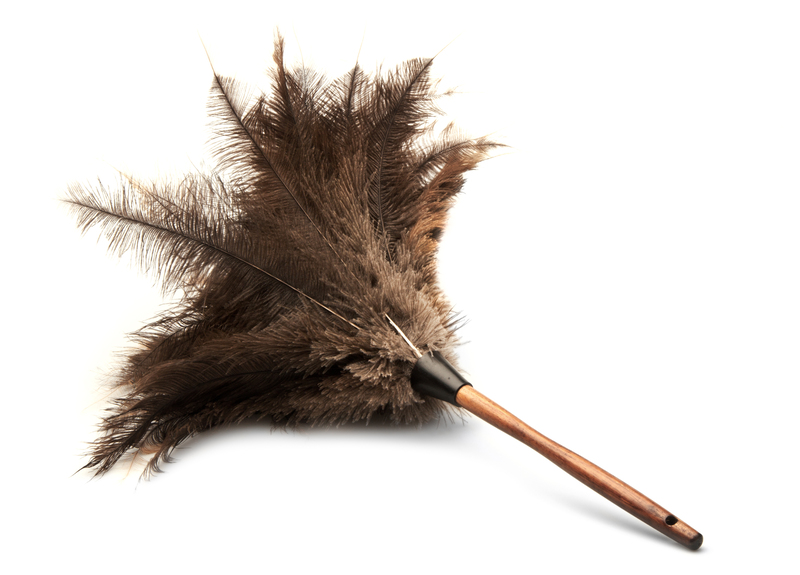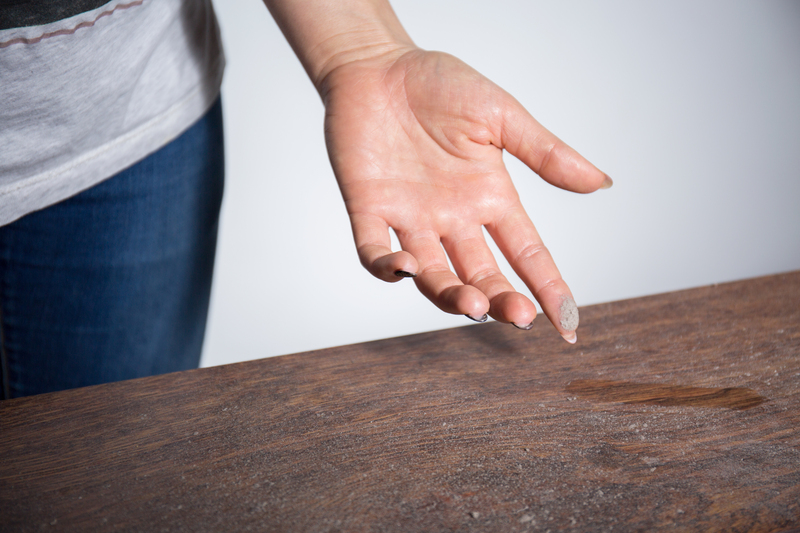Quick and Effective Ways to Tackle Stubborn Burnt-on Stovetop Residue
Posted on 29/06/2025
Quick and Effective Ways to Tackle Stubborn Burnt-on Stovetop Residue
Is your stovetop plagued by stubborn, burnt-on residue that's messing with your cooking routine and making your kitchen look less than pristine? You're not alone. Burnt-on stains are a common nuisance--but the good news is, you don't have to live with them! This comprehensive guide covers a variety of quick and effective methods for cleaning stubborn stovetop residue so you can restore your cooktop's shine and keep your kitchen sparkling. Whether you're dealing with a glass stovetop, gas range, or electric stove, these expert tips are designed to help you remove tough, burnt-on stains with ease and efficiency.
Why Burnt-On Stovetop Residue Is So Difficult to Remove
Before jumping into cleaning solutions, it's helpful to know why burnt-on stovetop stains are so pervasive. When food or grease is exposed to high heat, it undergoes chemical changes that make it adhere tightly to your cooktop's surface. The longer these residues sit, the more challenging they become to remove. Traffic from pots and pans, repeated cooking sessions, and lack of timely cleaning can all contribute to stubborn buildup.
Common Causes of Burnt-On Stovetop Residue
- Spills and Boil-Overs: Foods and liquids that spill onto the stove and aren't wiped up right away can quickly burn, cementing them to the surface.
- Cooking with High Heat: High temperatures can rapidly char food, making cleaning more difficult.
- Grease Splatter: Oily residues develop a stubborn, sticky layer that can blacken when repeatedly exposed to heat.
- Delayed Cleaning: The longer stains sit, the harder they get to remove.
The trick to effective stovetop cleaning is using the right method for your specific stove type and the nature of the stain.
Identifying Your Stovetop for the Safest Cleaning
Not all stovetops are created equal--and using improper cleaning techniques can cause permanent damage. Before you begin tackling burnt-on residue, identify your stove category:
- Glass or Ceramic Stovetop: Smooth, flat surfaces that are prone to scratching.
- Electric Coil Stovetop: Exposed coils atop a metal drip tray.
- Gas Range: Removable burner grates over metal (usually porcelain-coated) surfaces.
Always consult your appliance's manual for recommended cleaning instructions and products specific to your model.

Quick and Effective Home Remedies for Burnt-On Stovetop Residue
While commercial cleaners exist, many households prefer natural or inexpensive alternatives that are just as powerful in removing burnt residue. Try these proven DIY cleaning methods for every stovetop type:
Baking Soda and Vinegar Method
This classic cleaning combination is effective and safe for most surfaces.
- Sprinkle a generous layer of baking soda over the burnt-on areas.
- Spray or carefully pour white vinegar over the baking soda. The mixture will foam--this reaction helps to break down grime.
- Let it sit for at least 15-30 minutes for maximum effect. For extremely stubborn spots, leave it on longer or cover the area with a damp cloth.
- Use a non-abrasive scrubber or a soft sponge to gently scrub away the residue.
- Wipe clean with a damp cloth and buff dry with a microfiber towel.
Hot Soapy Water Soak for Stubborn Scorched Stains
- For Removable Parts (Electric Coil Drip Pans, Gas Burner Grates):
- Remove grates or drip pans and soak them in a sink filled with hot, soapy water for 30 minutes to loosen burned-on food.
- Scrub gently using a soft-bristled brush.
- For very persistent residue, make a paste of baking soda and water, apply it, and let it sit for an hour before scrubbing again.
- Rinse and dry thoroughly before returning them to the stove.
Lemon Power for Greasy Burnt Residue
Lemon juice is a natural degreaser that can help tackle grease and burnt-on food at the same time.
- Cut a lemon in half and squeeze the juice over the affected area.
- Let the juice sit for 10 minutes.
- Use the lemon halves themselves to scrub the stovetop in circles.
- Wipe clean with a damp cloth.
Special Techniques for Glass and Ceramic Stovetops
Glass and ceramic cooktops require more care. Here's how to safely remove burnt-on messes:
Razor Blade Scraper for Glass Top Stoves
- After applying a baking soda paste and letting it sit, hold a new, clean razor blade at a 45-degree angle to gently scrape away the softened debris.
- Work in short, even strokes and never gouge the surface.
- Wipe away loosened grime, then buff to shine with a microfiber towel.
Note: Only use this method if your stove's manufacturer approves it, as some coatings may scratch easily.
Specialized Glass Cooktop Cleaners
There are several commercial cleaners designed for glass cooktops that can break down burnt-on food without harming the finish. Apply as directed, allow to sit, scrub with a soft pad, then polish dry for a spotless surface.
Optimized Tips for Cleaning Gas Stove Tops
Gas ranges have removable grates and burners that tend to collect more severe burnt-on residue, especially around the burner heads.
Deep Cleaning Gas Stove Grates and Burners
- Remove grates and burner caps from the stove.
- Soak in hot, soapy water for up to an hour.
- Scrub with a non-abrasive pad. For really tough burned-on areas, use a paste of baking soda and a few drops of water.
- If needed, use a toothbrush or a soft brush to get into crevices.
- Let all parts dry completely before replacing.
For extremely stubborn burnt stains, you may use a degreasing spray or a small amount of ammonia in a sealed bag with the parts overnight--just be sure to rinse thoroughly and air out the parts before using them again!
Electric Coil Stovetop Residue Removal Strategies
- Electric coils themselves can be gently wiped with a damp cloth when cool, but do not submerge coils in water.
- Remove the drip pans beneath the coils and use the soaking or baking soda methods above to eliminate burnt-on grime.
- Rinse and dry thoroughly before reassembling.
Burnt-On Stovetop Residue Prevention Tips
Want to keep your stovetop looking brand new? Prevention is always easier than scrubbing out baked-on messes. Here's how to minimize future burnt-on residue:
- Wipe Spills Immediately: Clean up any spills or splatters as soon as it's safe to do so. Even a quick pass with a damp cloth can prevent burning.
- Regular Weekly Cleanings: A once-a-week cleaning can prevent stubborn buildup and make the task much easier overall.
- Use Lids and Splatter Guards: These inexpensive kitchen tools can dramatically reduce splatter and minimize residue formation.
- Cook with Lower Heat: Whenever possible, use the lowest effective heat setting to prevent food from burning onto the stove.
- Place a Protective Mat: Specialized stovetop protectors can help catch spills and are easily removed and washed.
When to Use Commercial Cleaners for Extreme Burnt Stains
Sometimes, burnt-on stovetop stains are simply too tough for natural remedies. In such cases:
- Choose a cleaner formulated for your stovetop: Look for products labeled "safe for glass," "ceramic," or "porcelain," as appropriate.
- Follow the instructions carefully: Let the cleaner sit as recommended, use the provided tool or a soft cloth, and rinse thoroughly.
- Ventilate well: Some cleaning products have strong fumes, so open windows and use fans if needed.
Pro tip: Read reviews and manufacturer guidelines for your specific stove to determine the safest commercial cleaner for removing stubborn, burnt-on residue.
Key Do's and Don'ts for Tackling Burnt-On Stovetop Residue
- DO use non-abrasive scrubbers to protect delicate surfaces.
- DO work in small areas for greater control and less risk of scratching.
- DON'T use steel wool or harsh scouring pads on glass, ceramic, or porcelain surfaces.
- DO test a small, inconspicuous area first when using any new product.
- DON'T attempt to clean the stovetop while it's hot--always allow it to cool completely for safety.
- DO wear gloves to protect your hands from harsh cleaners and sharp edges on removable stove parts.

Frequently Asked Questions About Burnt Stovetop Cleaning
How often should I deep clean my stovetop?
- Weekly: To keep stains from building up, aim for a light clean every week.
- After Major Spills: Deep clean immediately after major boil-overs or stubborn messes.
Is it safe to use vinegar or baking soda on my specific stove?
- In general, both are safe for most stovetops, but always check your manufacturer's guidelines before use--especially for modern glass cooktops.
What should I do if my stovetop remains stained after multiple cleanings?
- If stains are still present after several attempts, consider calling in a professional or checking with the manufacturer for specialized products and recommendations.
Summing Up: Restore Your Stovetop and Enjoy a Cleaner Kitchen
Tackling stubborn, burnt-on stovetop residue doesn't have to be a challenge you dread. With the right combination of elbow grease, smart natural cleansers, and commercial products when necessary, you can keep your stove looking (and working) its best. Remember to identify your stovetop, choose the most appropriate method, and prevent future stains with good kitchen habits. A sparkling stove is only a few steps away!
Ready to say goodbye to scorched stains? With these quick and effective stovetop cleaning solutions, even the most stubborn residue doesn't stand a chance!




